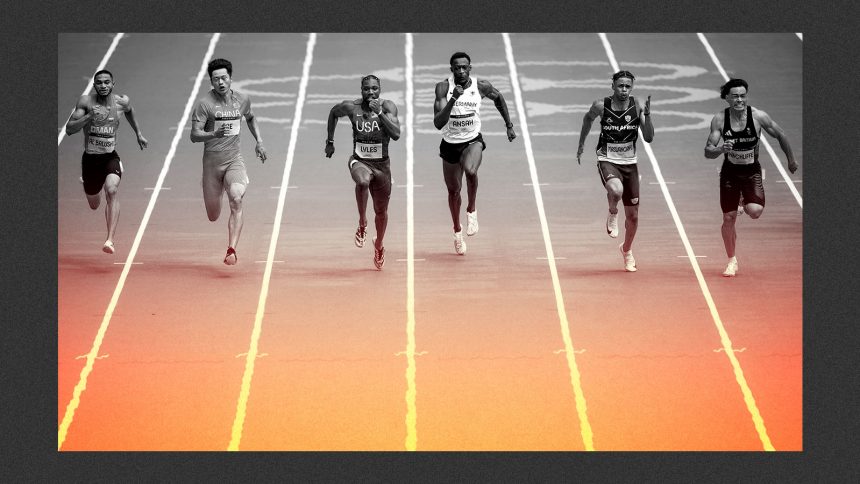Curled up on a small, white rectangle of fabric on the grass by a park bench in Paris, Italian swimmer Thomas Ceccon unintentionally caused a stir on the internet by taking a nap outside. This moment was captured by a fellow Olympic athlete and posted on social media on Monday. The nap came after Ceccon failed to qualify for the men’s 200-meter backstroke finals, despite winning gold in the 100-meter event just before. In an interview with an Italian broadcaster, Ceccon attributed his performance gap to poor sleeping conditions in the Olympic Village, particularly the heat.
There has been speculation that Ceccon’s nap was related to the uncomfortable temperatures in the Olympic village, adding to concerns about the impact of extreme weather on this year’s summer games. Leading up to the Paris Olympics, there were fears that the games could be the hottest on record, exceeding the high humidity and 90-degree-Fahrenheit days of the 2021 Tokyo events, where many athletes faced heat-related illnesses. During the first week of the Paris games, temperatures soared to 97 degrees F due to a heat dome settling over the city for four days.
To cope with the scorching weather, national teams took various measures to keep their athletes safe, such as renting air conditioners for their rooms in the Olympic Village and providing ice vests. Some sports, like tennis and soccer, implemented new protocols for additional rest breaks when temperatures exceeded safety thresholds. The Australian Olympic Committee went a step further by investing in state-of-the-art monitors to track temperature, radiation, humidity, and wind speed, providing personalized recommendations to help athletes manage heat risks.
The impact of climate change on extreme heat waves is becoming more evident, with the average summer temperatures in Paris rising by 3.1 degrees Celsius since 1924. This increase in temperatures poses serious risks to athletes’ performance and health. Experts agree that athletes need to acclimatize to the conditions before competing in high temperatures. While measures like air conditioning and cooling stations can provide relief, long-term solutions to mitigate the effects of climate change are essential.
As the dangers of extreme heat become more pronounced, organizers of future Olympics may need to reconsider the timing of summer games to avoid hazardous conditions. In the meantime, it is crucial for athletes to have proper heat preparedness plans in place, taking into account individual risk factors and health conditions. Ultimately, a combination of top-down regulations, athlete education, and sustainable practices will be key to ensuring the safety and well-being of athletes in the face of rising temperatures.






